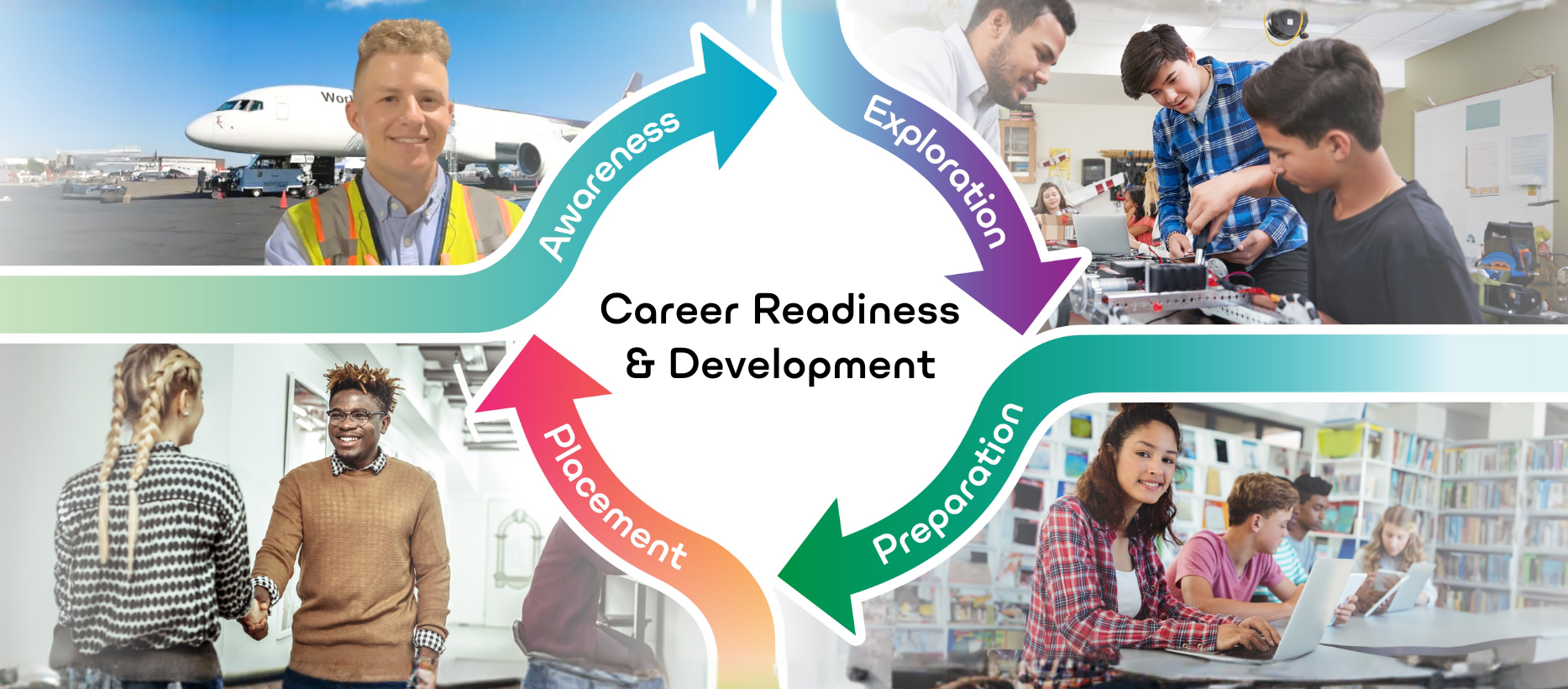How Career and Technical Education is Preparing Students for the Future of Work
Career and Technical Education (CTE) is experiencing a renaissance in America's K-12 schools. But is it enough?

Career and Technical Education (CTE) is experiencing a renaissance in America's K-12 schools. Ramped up from traditional shop classes, today's CTE programs are sophisticated career pathways that blend academic rigor with hands-on technical training and real-world employability skills.
The numbers tell a compelling story. Roughly 86% of public high schools now offer CTE programs, with enrollment climbing from 7.2 million students in 2015 to an estimated 10.1 million by 2025—a 40% increase in just a decade. This growth reflects both rising student interest and significant new investments from states recognizing CTE's critical role in workforce development.
Take Rhode Island, where approved CTE programs have surged 91% since 2015, and enrollment has nearly quadrupled from 5,485 students in 2017 to almost 19,500 in 2023. Washington State now serves over 180,000 secondary CTE students in sectors aligned with economic needs like IT, healthcare, and clean energy. Pennsylvania has boosted CTE funding by $61 million in just two years, now investing over $170 million annually.
What's Different About Modern CTE
Today's CTE programs look nothing like the vocational tracks of the twentieth century. Schools are now introducing career exploration as early as elementary school, building awareness and excitement about diverse career possibilities from an early age.
The curriculum itself has dramatically changed. Technical skills remain important, but modern CTE emphasizes what educators call "durable skills"—problem-solving, communication, adaptability, and critical thinking. Programs align with labor market demands in high-growth sectors including healthcare, advanced manufacturing, cybersecurity, and green energy technologies, as well as a vast range of fields, such as masonry, HVAC, computer-aided design (CAD), and culinary arts.

This alignment isn't just strategic—it's urgent. The manufacturing sector alone could need up to 3.8 million workers through 2033, yet nearly half of those positions may go unfilled without adequate workforce development. The challenge isn't simply teaching technical skills. It's ensuring students can access the education and authentic industry experiences necessary to fill these critical roles.
Additionally, CTE is moving from standalone electives to integrated, multi-year pathways. Students have the opportunity to earn dual credit, participate in internships, and graduate with industry-recognized credentials that have real value in the job market. This approach prepares them equally well for college and careers.
The Gap Between CTE Programs and Career Development
Despite this progress, many CTE programs still operate within systems designed for compliance and course tracking rather than comprehensive career development. Students may complete CTE pathways without ever connecting with actual professionals in their fields of interest. They earn credentials without building the professional networks that lead to opportunities. They learn about careers through static information rather than discovering them through authentic experiences.
This is where Career Readiness & Development (CRD) transforms what CTE can accomplish.
From Information to Discovery: The CRD Approach
Traditional career preparation delivers information—descriptions of jobs, lists of required skills, static pathway maps. Career Readiness & Development creates discovery through progressive, experience-driven engagement with the actual world of work.
CRD guides students through four connected phases:

Awareness - Students encounter diverse career possibilities early and often, not through generic career databases, but through authentic glimpses into workplaces and professions. They see careers in action, building excitement about possibilities they never knew existed.
Exploration - Rather than reading about careers, students virtually shadow professionals, explore career profiles informed by real labor market data, and begin identifying interests through experiences that bring careers to life. They test their curiosities against workplace realities.
Preparation - Students develop demonstrable skills through industry-informed projects, earn micro-credentials that signal competency to employers, and build portfolios that showcase their capabilities. Preparation means practicing, not just planning.
Placement - With developed skills and authentic industry connections, students transition to opportunities through work-based learning, internships, and direct pathways to employment or advanced training. They arrive prepared because they've been developing professionally, not just academically.
The Professional Connection Imperative
The most transformative element of modern CRD is direct access to industry professionals throughout the journey. Students don't just learn about careers—they meet the people doing them. They don't just develop skills in isolation—they receive feedback from working professionals. They don't graduate hoping to build networks—they've been building them since middle school.
This isn't about occasional guest speakers. It's about systemic, scalable access to professionals who provide:
- Live career conversations that reveal day-to-day realities
- Virtual workplace tours that show careers in authentic contexts
- Project mentoring that bridges classroom learning and industry expectations
- Early professional relationships that become lasting connections
Technology now enables this at scale. A student in rural Montana can connect with aerospace engineers. An entire school district can access healthcare professionals for career exploration. Geography no longer determines access to industry expertise.
Overcoming CTE's Persistent Challenges
Finding qualified CTE instructors remains the biggest challenge—57% of administrators report difficulty filling CTE positions, compared to just 39% for traditional academic roles. Many CTE educators come from industry backgrounds, where they can often earn higher salaries without the bureaucratic hurdles of teacher licensure. This creates persistent turnover and capacity constraints.
CRD addresses this by expanding who can contribute to career development. Schools don't need to hire industry experts full-time when they can connect students with thousands of working professionals virtually. One manufacturing engineer can reach classrooms across an entire state. A healthcare system's professionals can support career exploration in dozens of districts simultaneously.
Additionally, CTE's reach is limited in high-poverty and rural districts that often have fewer program options, outdated equipment, and limited industry partnerships. CRD democratizes access—every student, regardless of zip code, can explore diverse careers and build professional connections that would be geographically impossible through traditional work-based learning alone.
As artificial intelligence and emerging technologies reshape the workforce, some CTE programs are struggling to stay current. Technology options can be best in class today and obsolete tomorrow, requiring constant program modernization and sustained employer engagement.
This makes the progressive development model even more critical. Rather than training students for specific current technologies that may not exist in five years, CRD develops adaptive professionals who can learn continuously, navigate change, and build relationships that keep them connected to evolving industries.
The Future: Development Over Documentation
The developments shaping CTE's future all point toward the CRD model:
States are dramatically increasing funding into their programs—but funding alone doesn't create career-ready graduates. How those resources are deployed matters. Investments in authentic industry connections and progressive skill development create fundamentally different outcomes than investments in better compliance tracking systems.
Technology integration is accelerating—but not all technology serves career development equally. Platforms that facilitate discovery, enable industry connections, and support skill demonstration move students forward. Platforms that primarily track completion and manage workflows serve administrative needs without transforming student experiences.
Programs are incorporating cutting-edge tools and emphasizing work-based learning through internships, apprenticeships, and project-based experiences—but access remains uneven. Virtual professional connections and scalable industry partnerships can reach every student, not just those with geographic proximity to participating employers.
Partnerships with local industries ensure that what students learn reflects real-world applications—but most schools struggle to source and manage these relationships. Comprehensive professional networks maintained by dedicated platforms remove this burden from individual counselors and teachers.

Industry leaders recognize what's at stake. Ford CEO Jim Farley calls the skilled labor shortage a "huge crisis," noting that when electricians and plumbers are asked about their successors, they cannot name a next generation. This gap spans construction, transportation, and manufacturing—all facing an aging workforce with too few young people entering the trades. Farley's solution? Early, authentic exposure. He ensures his own son learns welding and fabricating, believing that as AI reshapes white-collar work, hands-on skills become increasingly valuable. This is exactly what scalable industry partnerships through CRD platforms deliver: systematic access to professionals who inspire students to consider careers they might never have discovered otherwise.
Evidence shows CTE is becoming more inclusive, with states like Rhode Island implementing equity-based funding initiatives to ensure all students have equal access to high-quality programs and pathways—but equity requires more than equal access to courses. It requires equal access to professional networks, industry connections, and the social capital that creates opportunities.
Where CTE and CRD Converge
Career and Technical Education has become essential in modern K-12 education, bridging the gap between classroom learning and workforce readiness. The growth in the past decade demonstrates strong demand from students, support from policymakers, and recognition from employers that quality CTE develops the skilled workforce our economy needs.
Career Readiness & Development represents CTE's full potential—transforming program participation into progressive career growth, compliance documentation into authentic skill demonstration, and course completion into professional network development.
The future of CTE is bright, but maximizing its impact requires embracing development over documentation, discovery over information delivery, and authentic industry connections over isolated skill building. Districts implementing comprehensive CRD approaches aren't just running better CTE programs—they're fundamentally changing how students prepare for, explore, and enter careers that may not even exist yet.
That's the evolution CTE deserves, and the transformation today's students require.

.jpeg)



.webp)